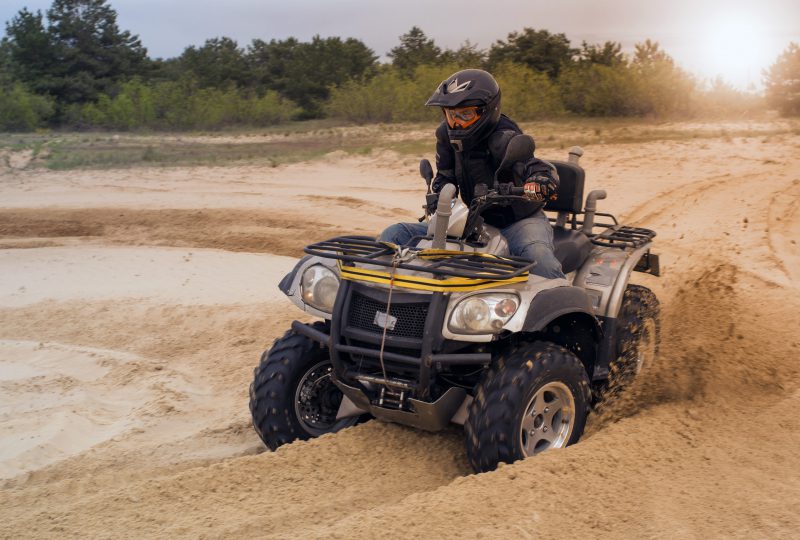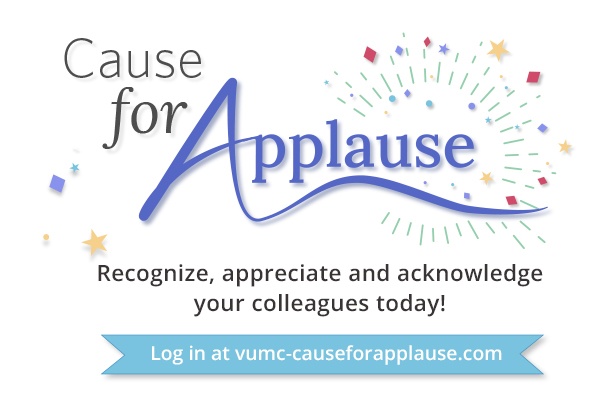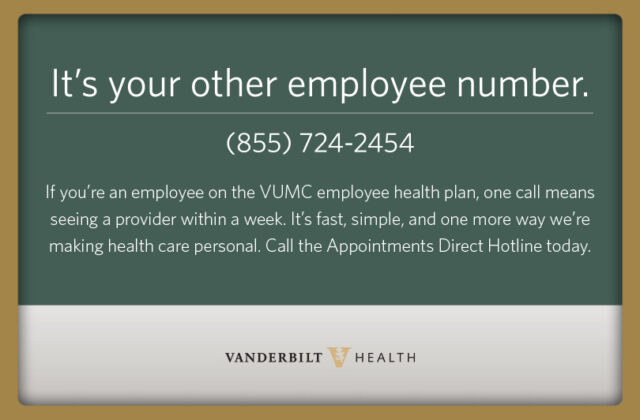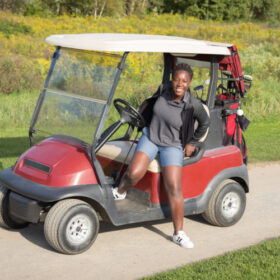“Had he not had on his helmet, we probably would have been planning his funeral”
Children's Hospital safety expert makes clear: on bikes, skateboards or ATVs, helmets protect the brain
May 26, 2022
Brayden Mahar, 12, has been riding an all-terrain vehicle (ATV) since he was 5 years old.
It is not an unusual sight for him to ride around his Manchester, Tennessee, neighborhood that dead ends into cul-de-sacs.
One thing is certain — he always wears a helmet.
Heath Mahar, Brayden’s father, knows that one piece of safety equipment likely saved his son’s life during a recent crash involving a minivan.
“Had he not had on his helmet, we probably would have been planning his funeral,” Mahar said, choking up. “His helmet was key. If you own one piece of safety equipment, that is what it should be.”
Brayden is being treated at Monroe Carell Jr. Children’s Hospital at Vanderbilt for injuries including broken ribs, lacerated liver, adrenal gland hemorrhage, road rash and extensive damage to his left foot.
The accident occurred just outside of his neighborhood while Brayden was making a loop back into the subdivision.
“His foot is torn up pretty bad,” said his father. “When he got hit, his foot got trapped between the four-wheeler and the van, then the force from the impact swung him onto the hood of the car, and his head hit the windshield, and then he bounced back onto the road.
“They are really concerned about the blood flow to his foot. We don’t want to lose it. We’ve been talking with him about it all, and he understands how lucky he is.”
According to safety experts at Children’s Hospital, wearing a helmet is the best save-the-brain decision anyone enjoying ATVs, bikes or skateboards can make.
“It should be a habit, much like putting on a seat belt,” said Purnima Unni, MPH, program manager, Pediatric Trauma Injury Prevention at Children’s Hospital. “A helmet helps to absorb the shock upon impact to help protect the brain, reducing the severity of injury.”
Children’s Hospital fully supports recommendations by the American Academy of Pediatrics and the American College of Surgeons that children 16 and under should not ride ATVs due to the high risk of serious injuries. However, if parents allow their children to ride ATVs despite the known risk that these vehicles pose to children, the following safety measures are strongly recommended:
- Always wear protective gear — especially a helmet — when riding ATVs. Head injuries are by far the leading cause of death and disability related to ATV crashes. Helmets are known to reduce head injuries by 85%. Wear a motorcycle or motorized sports helmet and make sure it is certified by the U.S. Department of Transportation or the Snell Memorial Foundation.
- Avoid driving ATVs with a passenger or riding as a passenger. Most ATVs are designed to carry only one person.
- Take a hands-on safety training course if one is available in your area.
- Do not drive ATVs on paved roads because they are difficult to control. Collisions with cars and other vehicles can be deadly.
- Do not permit children to drive or ride adult ATVs. Children are involved in about one-third of all ATV-related deaths and hospital emergency room injuries. Most of these deaths and injuries occur when a child is driving or riding on an adult ATV.
Mahar, who also rides with his son, agrees that the vehicle must be appropriately sized for the age of the rider and that if Brayden had stayed within the neighborhood, he likely would have been OK.
“Our neighborhood is closed off with no through traffic,” he said. “Everyone watches out for each other. We are all mindful when driving down the road.
“The takeaway from this: If you are a child or adult, everybody needs to wear a helmet even if you think you don’t need one.”
Brayden was wearing a full-face helmet that covers the entire head and extends across the jaw.
“As a pediatric trauma surgeon, we see so many devastating injuries,” said Irving J. Zamora, MD, MPH, assistant professor of Pediatric Surgery and director of Advanced Minimally Invasive Surgery at Children’s Hospital.
“It’s so important that Brayden was in a helmet. It protected his head and brain. Non-helmet injuries tend to be the main cause of substantial injury and even death in these situations. But there are many more prevention and safety measures that need to be highlighted with motorized vehicle use that we highlight with families upon discharge.”
Since 2018, the hospital has heralded the Ride on TN-ATV Safety Program and partnered with Tennessee 4-H and Tennessee Future Farmers of America to arm high school students with information about ATV usage. The program is funded by the Polaris Foundation and Ford Motor Company Fund
In 2020 the hospital saw 99 ATV incidents when most students were at home during the COVID-19 pandemic. That number dropped to 69 admissions in 2021.
ATV crashes are the fourth leading cause of trauma admission at Children’s Hospital.
To learn more about the Ride on TN-ATV Safety Program visit: https://www.vumc.org/injuryprevention/ride-tn-atv-safety-program-0.










